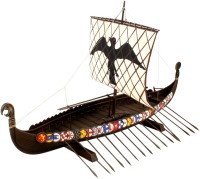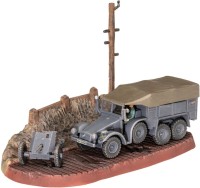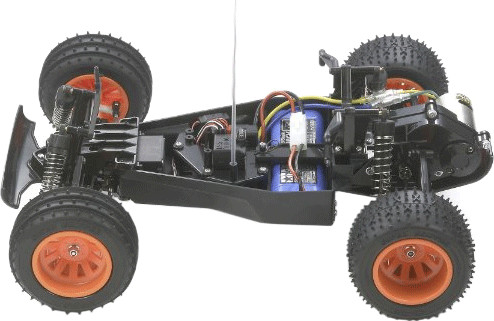Aedes Ars Kukulcan Temple Architectural Model Kit AED1270
 | £48.00 Buy! Aedes Ars Kukulcan Temple Architectural Model Kit AED1270Hobbies.co.ukDelivery: in United Kingdom Report |
Buy Aedes Ars Kukulcan Temple Architectural Model Kit AED1270
When you make a purchase through links on our site, we may receive a affiliate commission.
Aedes Ars Kukulcan Temple Architectural Model Kit AED1270 | £47.95 | ||||
Aedes Ars Kukulcán Temple Approximate number of pieces: 4500 Difficulty degree: 7.5/10 Sizes: 440 x 440 x 190mm Scale: 1/175 These kits contain high quality ceramic pieces (which simulate the stones and the original materials), cardboard structure, glue, scenic material, and instructions. Aedes Ars produce a wide range of building sets which are used for the scale reproduction of some historical monuments such as castles, churches, bridges, and lighthouses, (some are recognised World Heritage Sites), as well as diverse miniature buildings of typical country constructions. The monument and its history. El Castillo (Spanish for "castle"), also known as the Temple of Kukulkán, is a Mesoamerican step-pyramid that dominates the center of the Chichen Itza archaeological site in the Mexican state of Yucatán. The building is more formally designated by archaeologists as Chichen Itza Structure 5B18. The pyramid consists of a series of square terraces with stairways up each of the four sides to the temple on top. Sculptures of plumed serpents run down the sides of the northern balustrade. During the spring and autumn equinoxes, the late afternoon sun strikes off the northwest corner of the pyramid and casts a series of triangular shadows against the northwest balustrade, which some believe creates the illusion of a feathered serpent "crawling" down the pyramid. Each of the pyramid's four sides has 91 steps which, when added together and including the temple platform on top as the final 'step', produces a total of 365 steps (which is equal to the number of days of the Haab' year). The structure is 24 m high, plus an additional 6 m for the temple. The square base measures 55.3 m across. The Mexican government restored the pyramid in the 1920s and 1930s, concurrent with the Carnegie Institution's restoration of the Temple of Warriors. Archaeologists were able to reconstruct two sides of the pyramid in their entirety. It was not uncommon for Mesoamerican pyramids to be successively built over the core and foundations of earlier structures, and this is one example. In the mid 1930s, the Mexican government sponsored an excavation into El Castillo. After several false starts, they discovered a staircase under the north side of the pyramid. By digging from the top, they found another temple buried below the current one. Inside the temple chamber is a Chac Mool statue and a throne in the shape of jaguar, painted red with spots made of inlaid jade. The Mexican government excavated a tunnel from the base of the north staircase, up the earlier pyramid's stairway to the hidden temple. In recent years, the National Institute of Anthropology and History (INAH), which manages the archaeological site of Chichen Itza, have been closing monuments to public access. While visitors can walk around them, they can no longer climb them or go inside their chambers. Climbing El Castillo was stopped in 2006. At
The product description is generated based on data from online stores. Before purchasing be sure to verify all information directly with the seller.

The Most Interesting Generative AI Trends for 2025Exploring how AI will be used in finance, medicine, education, video games, and creativity

Best Portable Laptop StandsFoldable and reliable stands for comfortable laptop use at home, in the office, and on the go
How to place an order?How to add store?
Remember that the online store is responsible for the accuracy of information regarding price, warranty, and delivery!
We recommendCompare using chart →



























